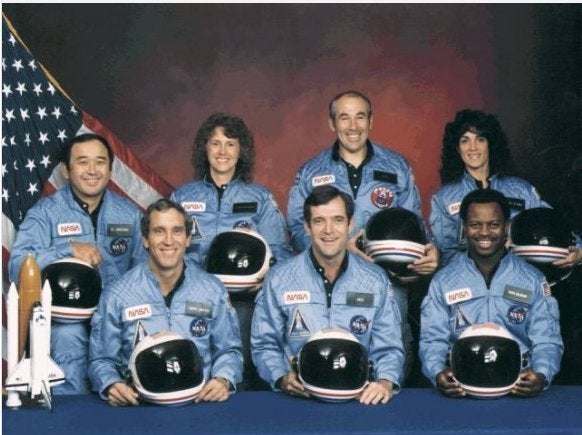
Twenty-five years ago, on January 28, 1986, I sat in an AP English class at Killeen High School, outside of Fort Hood, Texas. This was back in the days when people drove Pontiac Fieros and MTV actually played music videos. To have a television in a classroom -- particularly one hooked up to cable -- was no small matter.
In our class, we were lucky -- we actually had such a television. And, as fate would have it, our teacher broke us away our studies around 10:30 that morning (Central time) to watch the Space Shuttle Challenger carry fellow teacher Christa McAuliffe into space on mission STS-51L.
The rest, of course, was not English, or even necessarily science, but history. Seventy-three seconds into the mission, Challenger exploded. It was the victim of an O-ring failure in its right-side rocket booster, believed to have been caused by Florida's unseasonably cold weather that week.
Elsewhere, I've written that the seven lives lost that day remain well worth remembering. Today, on the twenty-fifth anniversary of the loss of Challenger, it is particularly fitting to once again pause and remember that the Challenger Seven were more than just names -- and that, to seven families, Challenger was more than just an iconic photo.
Francis R. "Dick" Scobee was the mission's spacecraft commander. A former U.S. Air Force pilot who flew combat missions in Vietnam, Scobee was a talented test pilot who had graduated from high school in Auburn, Washington, and in 1965, from the University of Arizona. He joined NASA in 1978; STS-51L would have been his second space shuttle mission. His official NASA biography listed a diverse number of hobbies -- oil painting, woodworking, motorcycling, and racquetball, to name a few.
Back on Earth, Scobee left his wife, June, and two children. Today, his widow, June Scobee Rodgers, Ph.D., is the Founding Chairman of the Board and Founding Director of the Challenger Center for Space Science Education (www.challenger.org).
U.S. Navy Commander Michael J. Smith served as Challenger's pilot. A native of Beaufort, North Carolina, who listed woodworking, tennis, and squash as his hobbies, he graduated from the United States Naval Academy in 1967. Like Scobee, he was a combat veteran of the Vietnam War and a former test pilot. He was survived by his wife, Jane, and his three children.
Judith A. Resnik, a classical pianist who held a Ph.D. in electrical engineering from the University of Maryland, was born in Akron, Ohio, and later graduated from Carnegie Mellon University. Her engineering work included stints with RCA, the National Institutes of Health, and Xerox before she joined the astronaut program in 1978. On board as a mission specialist, STS-51L would have been her second shuttle mission.
U.S. Air Force Lieutenant Colonel Ellison S. Onizuka was another mission specialist and, like Resnik, was marking his second shuttle mission. A native of Kealakekua, Hawaii, Onizuka earned degrees from the University of Colorado before going on to become a test pilot for the Air Force. He was survived by his wife, Lorna, and two daughters and is remembered as America's first Japanese American astronaut.
Ronald E. McNair was born and grew up in Lake City, South Carolina. He graduated with a bachelor of science degree in physics from North Carolina AT&T State University in 1971; he earned his Ph.D. from the Massachusetts Institute of Technology five years later. A fifth-degree black belt karate instructor and an accomplished jazz saxophonist, he had, in 1984, become the second African American astronaut to orbit Earth on shuttle mission STS-41B as a mission specialist. He was survived by his wife, Cheryl, and two children.
Gregory B. Jarvis, one of the shuttle's payload specialists and on board to conduct experiments on behalf of the Hughes Aircraft Corporation, was one of the mission's two rookies. Born in Detroit, Michigan, he graduated from New York's Mohawk Central High School and later earned degrees from SUNY-Buffalo and Northeastern University. An avid squash player, bicyclist, and classical guitarist, he was survived by his wife, Marcia.
Finally, there was Sandra Christa Corrigan McAuliffe. McAuliffe rounded out Challenger's crew as the other payload specialist. Born in Boston, Massachusetts, the thirty-seven-year-old economics, history, and law teacher from New Hampshire's Concord High School represented the culmination of NASA's Teacher in Space program. She was survived by her husband, Steven (now a federal judge), and two children.